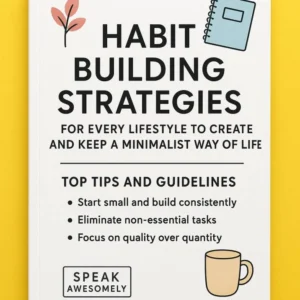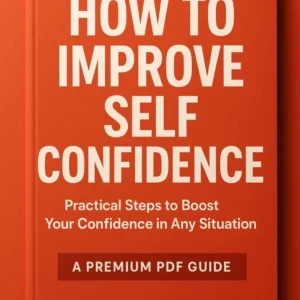Have you ever had a customer raise their voice, make unfair accusations, or cross the line of basic respect?
If you work in customer service, retail, hospitality, or any client-facing industry, chances are you’ve faced a rude customer at least once. I still remember my early days as a customer service representative at a busy electronics store. One Friday afternoon, a man stormed in, slammed a faulty speaker on the counter, and started shouting about how we had “ruined his weekend”. My first instinct was to defend myself – but that would have been the wrong move.
Over the years, I’ve learnt that responding to rudeness the right way can not only save a situation but also turn an unhappy customer into a loyal one. In this article, I’ll share not just what to say, but how to say it, backed by real-world experience, expert advice, and actionable steps.
Why Handling Rude Customers Matters More Than You Think
Rude customers aren’t just a source of stress – they can directly impact your brand reputation, team morale, and even your revenue.
A 2022 study by the Institute of Customer Service found that 56% of consumers share negative experiences online. One poorly handled interaction can go viral, costing your business not only that customer but potentially hundreds more.
On the flip side, a Harvard Business Review case study showed that effective conflict resolution increases customer retention rates by up to 70%.
In other words, mastering the art of responding to rude customers is a business skill worth cultivating.
The Psychology Behind Rude Customers
Before jumping to responses, it helps to understand why some customers behave badly:
- Stress or urgency – They may be facing personal or professional pressures unrelated to you.
- Perceived injustice – They feel they’ve been wronged or overcharged.
- Communication style – Some people are naturally blunt or lack awareness of how they come across.
- Testing boundaries – Occasionally, customers behave rudely to see how far they can push.
Recognising the underlying cause doesn’t excuse the behaviour, but it can guide your response.
Best Strategies for Responding to Rude Customers
1. Pause Before You Respond
When faced with hostility, your instinct might be to match their energy. Don’t. A deep breath before speaking gives you the space to respond rather than react.
Example:
Customer: “This is the worst service I’ve ever had!”
You: (Pausing for two seconds) “I’m sorry to hear you feel that way. Let’s see what we can do to fix this.”
2. Use Active Listening
Active listening makes customers feel heard, even if you can’t meet all their demands.
Techniques:
- Nod and maintain eye contact.
- Paraphrase their concern: *”So, you’re upset because your order was delayed?”
- Avoid interrupting.
According to Dr. Michael Reddington, a certified forensic interviewer, “Acknowledging emotions first often de-escalates tension faster than solving the problem.”
3. Keep Your Tone Calm and Professional
Your tone can either calm a situation or fan the flames. Even if your words are polite, a defensive tone will escalate conflict.
Example:
Instead of: *”That’s not our fault.”
Say: *”I understand this has been frustrating. Let’s go over what happened and find a solution.”
4. Set Boundaries Politely
Professionalism doesn’t mean tolerating abuse. If a customer crosses the line, address it calmly.
Example:
“I want to help you, but I can’t do that while being shouted at. Can we continue this conversation respectfully?”
This protects both your dignity and your mental well-being.
5. Offer Solutions, Not Excuses
Instead of explaining why the problem happened, focus on what you can do next.
Example:
“I can offer you a replacement at no extra cost, and we’ll ship it express so it arrives tomorrow. Would that work for you?”
6. Know When to Walk Away
In rare cases, a customer may remain hostile despite your best efforts. If they become abusive, it’s okay to end the interaction.
Example:
“I’m ending this conversation now. If you’d like to discuss this later, please contact our customer support department.”
Real-World Examples
Case Study: The Coffee Shop Owner Who Won Over a Rude Regular
Lucy, a café owner in Manchester, had a customer who complained every morning about the temperature of her coffee. Instead of arguing, Lucy started greeting her warmly by name and asking about her day before handing over the cup. Within weeks, the complaints stopped, and the customer began bringing friends.
Lesson: Sometimes rudeness softens when you humanise the interaction.
Read Also: Best Replies to “I Hate You”: How to Respond with Confidence, Empathy, and Wit
FAQs:
Q: Should I apologise if it’s not my fault?
A: Yes – apologise for their experience, not for something you didn’t do. “I’m sorry you’ve had this experience” works well.
Q: How do I stop taking rudeness personally?
A: Remind yourself that it’s about the situation, not you. Having a supportive team culture also helps.
Q: Can humour defuse a rude customer?
A: Sometimes, if the context is right. But avoid sarcasm – it often backfires.
Actionable Takeaways
- Pause before responding to gather your composure.
- Use active listening to make the customer feel heard.
- Maintain a calm, even tone at all times.
- Set boundaries when behaviour becomes unacceptable.
- Focus on solutions rather than excuses.
- End the conversation if abuse continues.
Final Thoughts
Dealing with rude customers is one of the toughest parts of any public-facing role. But with the right approach, you can protect your professionalism, safeguard your mental health, and sometimes even win over the very people who challenge you the most.
The next time a customer tests your patience, remember: your response says more about your brand than their complaint ever will.
What about you? Have you ever turned around a difficult customer interaction? Share your story below – your experience might be the advice someone else needs.
Recommended Products

Habit Building Strategies for Minimalist Living | Speak Awesomely Guide
Original price was: $ 12.$ 5Current price is: $ 5.Add to Cart
Unshakable Self Confidence PDF Guide | Speak Awesomely
Original price was: $ 10.$ 5Current price is: $ 5.Add to Cart
100 First Texts That Always Get a Reply
Original price was: $ 15.$ 5Current price is: $ 5.Add to Cart
All Emoji Meanings Guide (3500+)
Original price was: $ 15.$ 7Current price is: $ 7.Add to Cart




